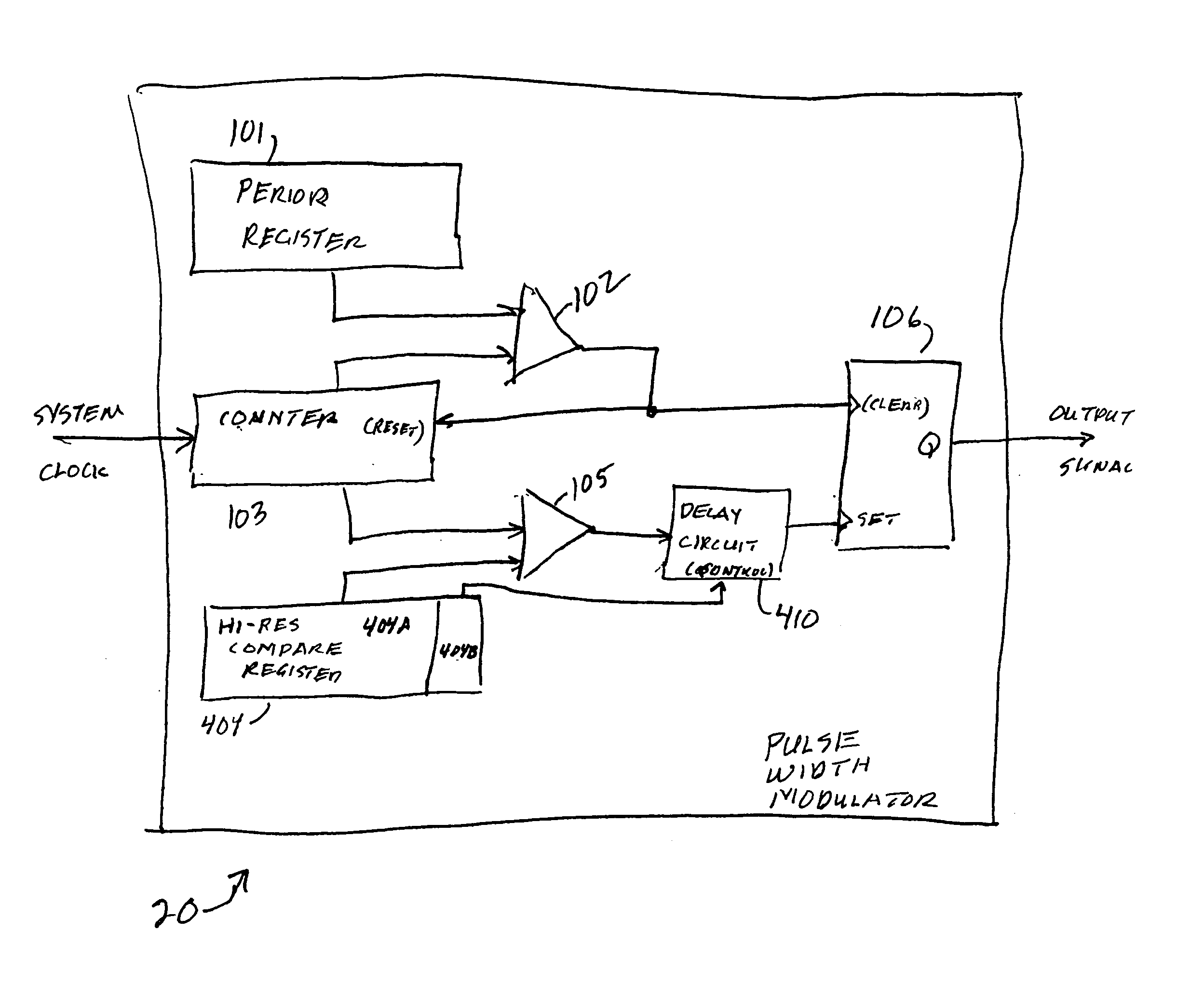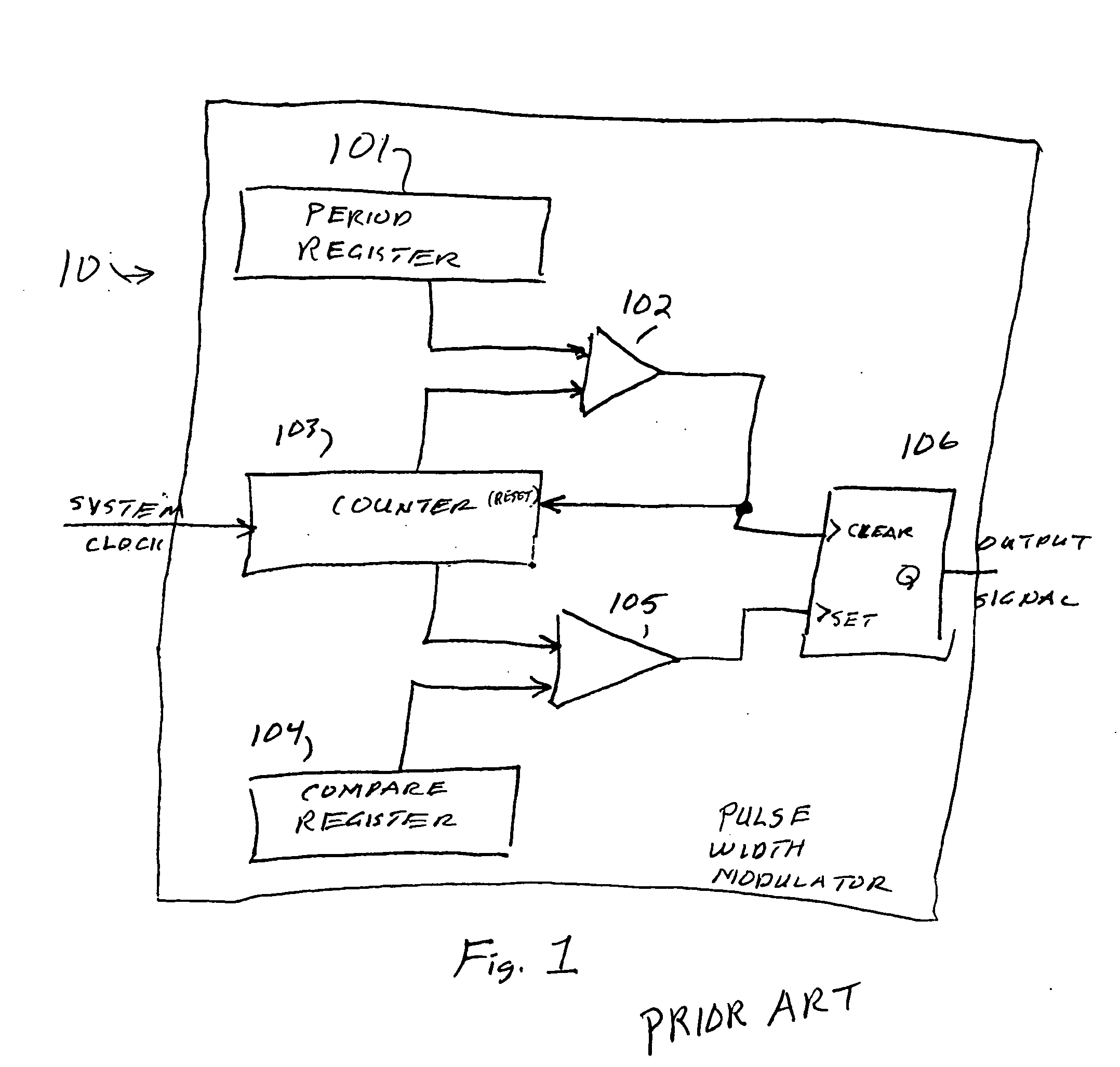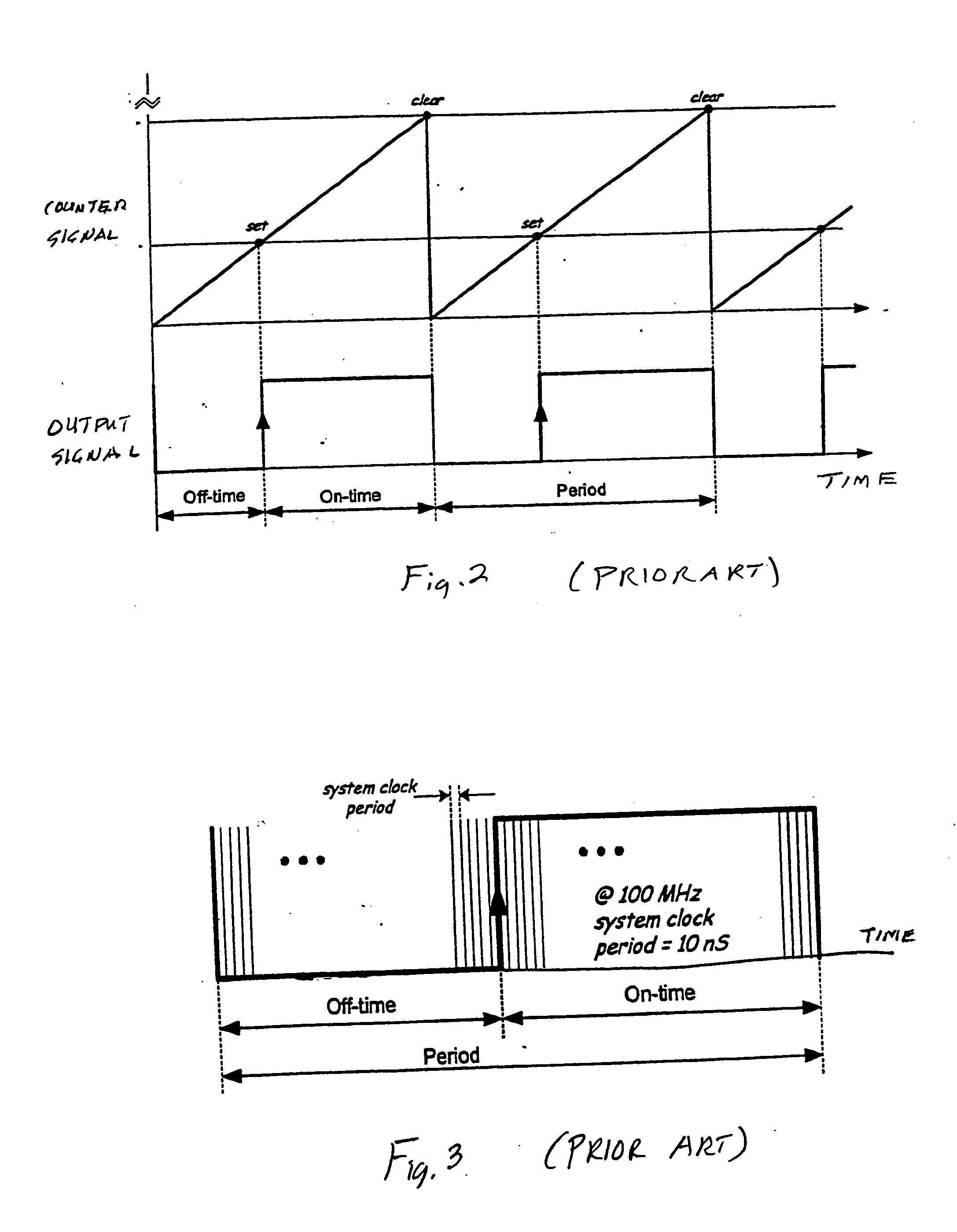Apparatus and method for increasing the performance of a clock-based digital pulse width modulation generator
a technology of clock-based digital pulse width and generator, applied in pulse manipulation, pulse technique, instruments, etc., can solve the problems of signal integrity, system clock can only be increased so much, and the width modulator
- Summary
- Abstract
- Description
- Claims
- Application Information
AI Technical Summary
Benefits of technology
Problems solved by technology
Method used
Image
Examples
Embodiment Construction
1. Detailed Description of the Figures
[0020]FIG. 1, FIG. 2, and FIG. 3 having been discussed with respect to the related art.
[0021] Referring to FIG. 4, a block diagram of a pulse width modulator 20, according to the present invention, is shown. Comparing FIG. 4 with FIG. 1, the counter 103, the period register 101, the comparators 102 and 105, and the DQ flip-flop 106 operate in a manner similar to the operation described with respect to FIG. 1. However, the compare register 104 is implemented as a hi-res compare register 404. The hi-res compare register 404 is divided into two parts, a register portion 404A analogous to the compare register 104, and register portion 404B. The output terminal of the comparator 105 is applied to an input terminal of delay circuit 410. The output terminal of delay circuit 410 is applied to the set terminal of Q flip-flop 106. The contents of hi-res register portion 404B are applied to a control (set) terminal of delay circuit 410.
[0022] Referring ...
PUM
 Login to View More
Login to View More Abstract
Description
Claims
Application Information
 Login to View More
Login to View More - R&D
- Intellectual Property
- Life Sciences
- Materials
- Tech Scout
- Unparalleled Data Quality
- Higher Quality Content
- 60% Fewer Hallucinations
Browse by: Latest US Patents, China's latest patents, Technical Efficacy Thesaurus, Application Domain, Technology Topic, Popular Technical Reports.
© 2025 PatSnap. All rights reserved.Legal|Privacy policy|Modern Slavery Act Transparency Statement|Sitemap|About US| Contact US: help@patsnap.com



